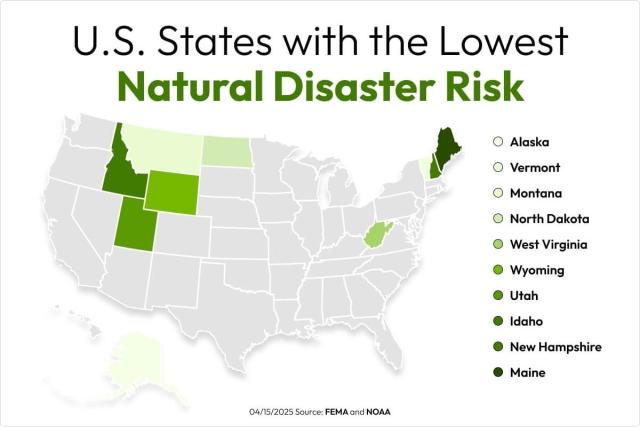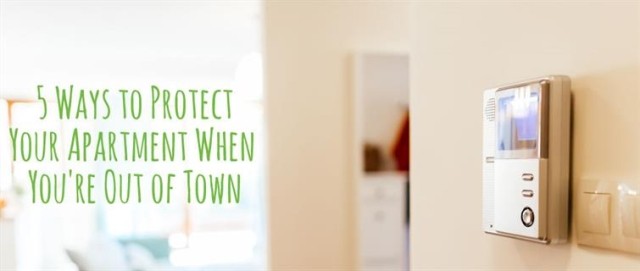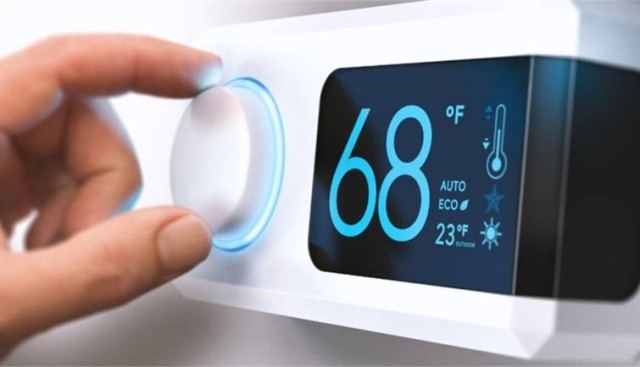Depending on where you live and the type of natural disasters that occur there, every location brings its own unique challenges. Hurricanes can cause flooding and water damage, while tornadoes can level buildings.
Living in a state prone to these weather events can cause damage and displacement. Still, there are less obvious issues, such as additional repair expenses, higher insurance costs, and limited insurance coverage. Renting in one of the safest states for natural disasters means you likely won’t have to worry about significant weather events.
To determine the safest states in the U.S., we looked at data from FEMA and NOAA over the past 10 years. NOAA ranks states by weather and climate hazard risk in the risk score. FEMA does something similar, but its risk index score considers a couple more factors other than weather hazards.
For both scores, the number is 0–100, with lower being safer. While all states experience weather events, the frequency and severity of these events in the safest states are lower, making them safer.
Here are the safest states for natural disasters:
Alaska
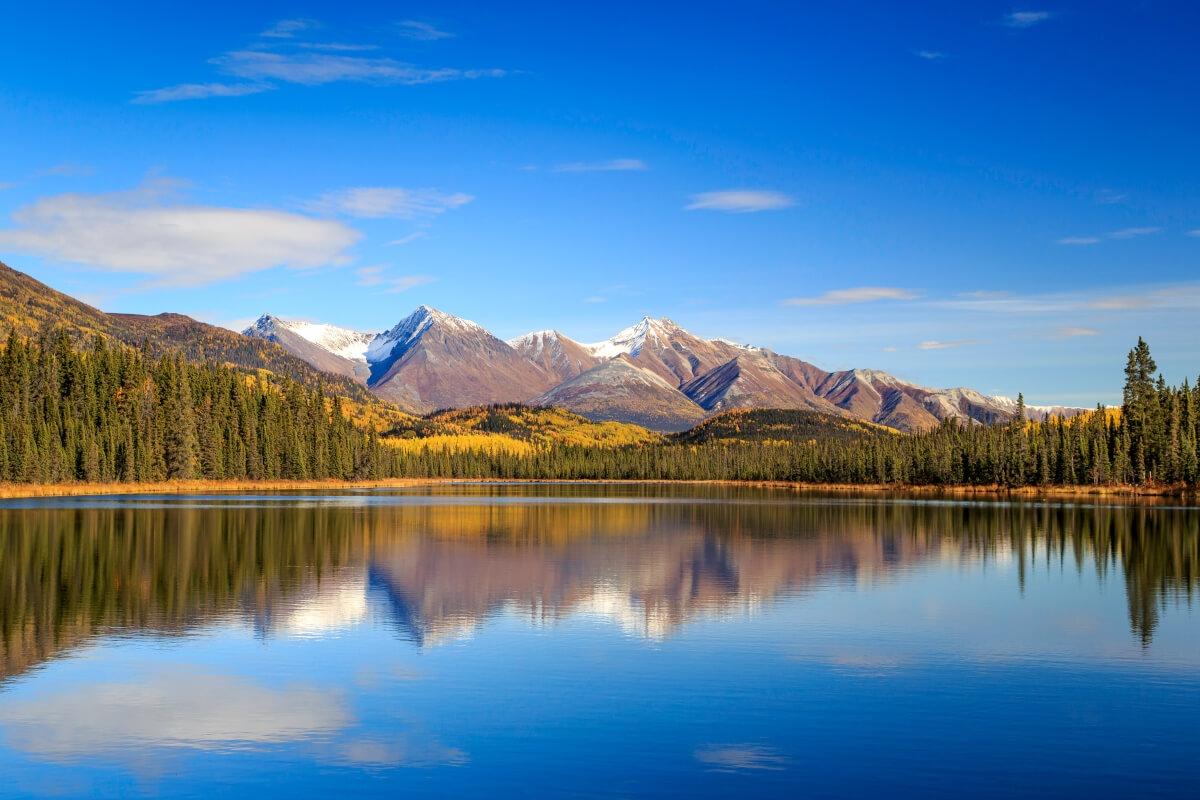
- Average Risk Score (FEMA): 23
- Risk Score (NOAA): 4.03
- U.S. Region: West
- Most common weather event: Severe storms
- Average rent: $1,283/month
While there isn’t a high frequency of natural disasters in Alaska (the frequency is .27 disasters/year), there are occasional events to prepare for. Over the past 10 years, 31 disasters have been declared in Alaska, and three of them were billion-dollar wildfires.
Earthquakes and volcanic activity happen because Alaska is near a tectonic plate with many volcanoes. Don’t hang anything heavy from your ceilings or walls, as it could fall during an earthquake. Because of the earthquakes, coastal areas can be hit by tsunamis.
During warmer months, the heavy snow transitions to heavy rain, so be prepared for severe storms, runoff, and snowmelt from the mountains that can cause flooding and landslides. If you face flooding, unplug all electronics and appliances and turn off the power from the breaker box.
It also depends on the region. The Arctic is so dry that it is a desert, while Southeast Alaska has an average precipitation of 67–149.5 inches. Interior cities like Fairbanks receive far less rain as mountain ranges block storms. In these drier regions, wildfires are a concern.
Snowstorms and winter storms are a threat in certain areas in Alaska because of heavy snowfall; some places receive over 300 inches. Juneau in the Inside Passage can get a lot of snow, but the milder ocean temperatures cause it to melt much quicker.
Renter Tip: Rent an apartment with a garage for easy access and to keep your car from being buried in snow.
Vermont
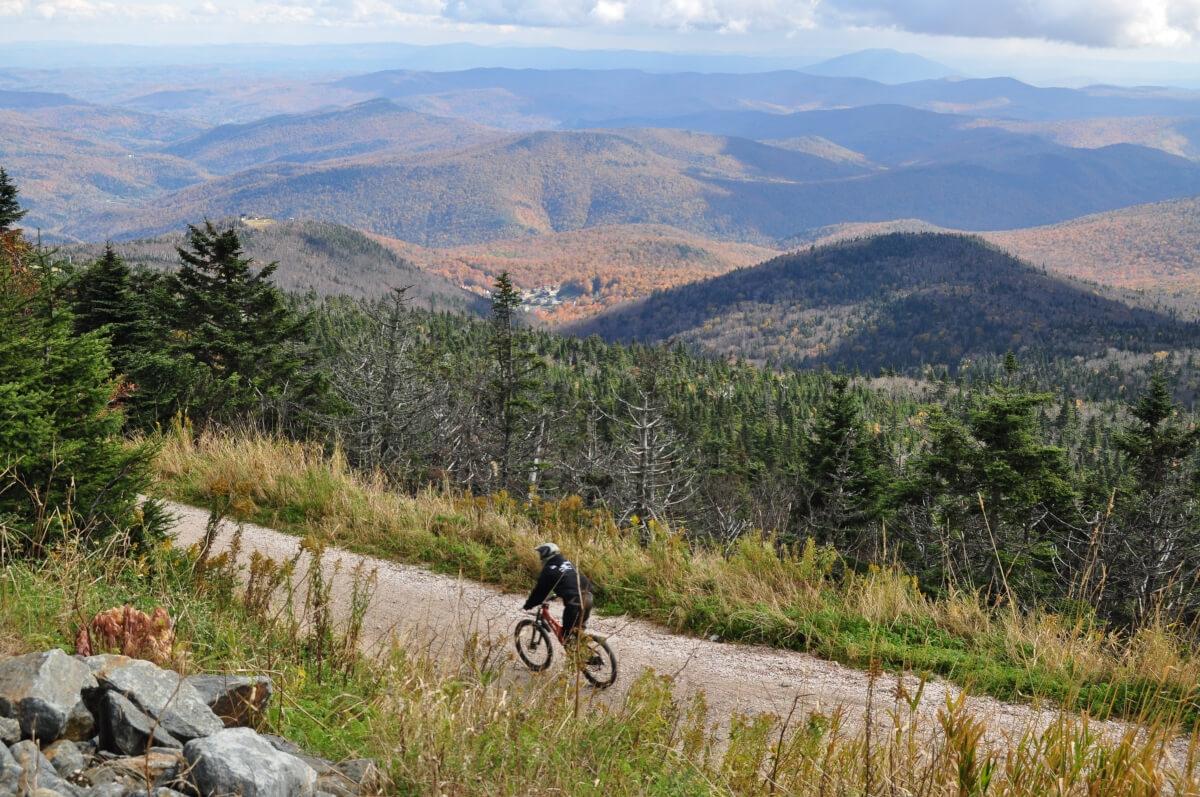
- Average Risk Score (FEMA): 28
- Risk Score (NOAA): 7.52
- U.S. Region: Northeast
- Most common weather event: Severe storms
- Average rent: $1,814/month
When you live in Vermont, you won’t often face extreme natural disasters as the frequency is only .55 disasters/year. However, you still need to watch out for some weather events. There have been 21 disasters in the past 10 years. Six have been billion-dollar weather and climate disasters: one drought, one flood, two severe storms, and two winter storms.
Vermont receives an average of 43 inches of precipitation throughout the year. Heavy rain, severe storms, and overflowing bodies of water cause flooding. Renting an apartment on a higher floor can prevent flooding.
The cold season brings winters and ice storms that make commutes and traveling treacherous. These cold conditions and high precipitation rates create heavy snowfall, an average of 75–85 inches annually.
Renter tip: A renter-friendly method of insulating your apartment is covering your windows with plastic sheet insulation or heavy blankets.
Montana
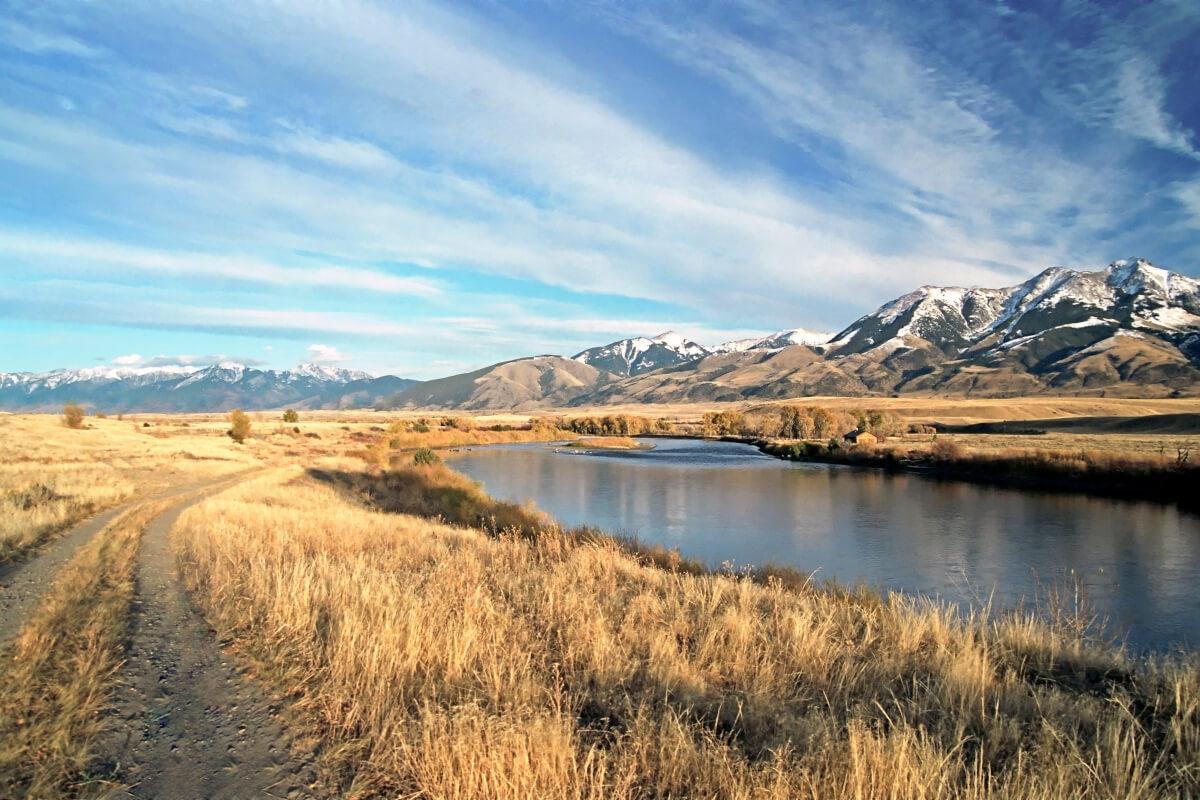
- Average Risk Score (FEMA): 21
- Risk Score (NOAA): 9.05
- U.S. Region: West
- Most common weather event: Fires
- Average rent: $1,364/month
As Montanans face harsh weather events regularly, they are much more prepared and have developed infrastructure to deal with the weather. These events do not always become disasters; Montana only has 1.36 disasters yearly.
In the past 10 years, there were 37 declared disasters, and 15 of those have been billion-dollar weather and climate disasters; of those 15, six were droughts, three were severe storms, and six were wildfires.
The extremes of Montana's weather can cause residents to face fires during hot, dry times and flooding near mountains because of runoff and snowmelt. High elevations can get up to 22–30 inches of rain annually, while valleys and eastern areas get about 11–14 inches.
Extreme and prolonged cold during the winter can make perfect conditions for winter storms, blizzards, and ice. Snowfall averages from 50 inches in valleys and low areas to 100–300 inches at higher elevations. Since winters can get cold, getting a draft guard could be a worthwhile investment. It is a renter-friendly method of weatherproofing.
Due to Montana being far inland, it is not regulated by the oceans, meaning temperatures can fluctuate wildly. Typically, summer temperatures are 80°F, with heat waves causing them to reach the mid-90s°F or above. Renting an apartment with air conditioning or investing in high-quality fans to keep yourself safe from the heat is essential.
Renter tip: Getting renters insurance will help protect you and your belongings. Typically, renters’ insurance covers fires but doesn’t always cover flooding. Check with your insurance company to see what your coverage is.
North Dakota
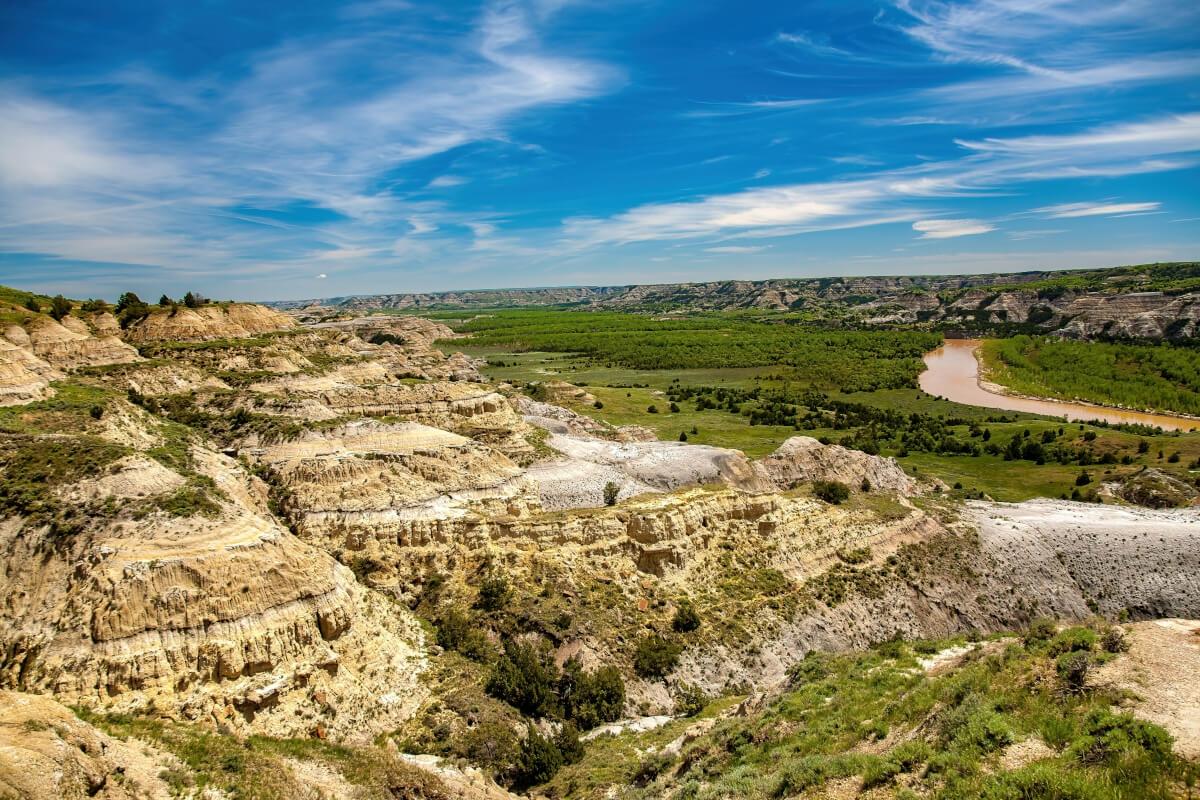
- Average Risk Score (FEMA): 34
- Risk Score (NOAA): 8.72
- U.S. Region: Midwest
- Most common weather event: Floods
- Average rent: $937/month
With only .82 disasters/year and 16 declared in the past 10 years, North Dakota doesn’t experience a high frequency of disasters. The low number of disasters and the state’s disaster plans contribute to why it is one of the safest states. Nine have been billion-dollar weather and climate disasters. There have been four droughts, one flood, three severe storms, and one wildfire.
As North Dakota is on the northern edge of Tornado Valley, tornadoes travel through the state with the highest frequency in July, followed by June and August.
Droughts are more common in the drier west, while flooding is more severe in the east because of river valleys. It is one of the drier states, with an average of 17 inches of rainfall. Adhere to any drought regulations in place when such an event occurs.
If you love snow, North Dakota is perfect. It can get anywhere from 46 to 50 inches or more in higher areas. Blizzards are also a risk because of the cold and the amount of snow the state gets. Before winter hits, check your apartment's sealing, insulation, and weatherproofing. If needed, ask your landlord to repair it.
Renter tip: While it may be a bit more expensive, finding a rental home with a basement will give you somewhere safe to shelter.
West Virginia
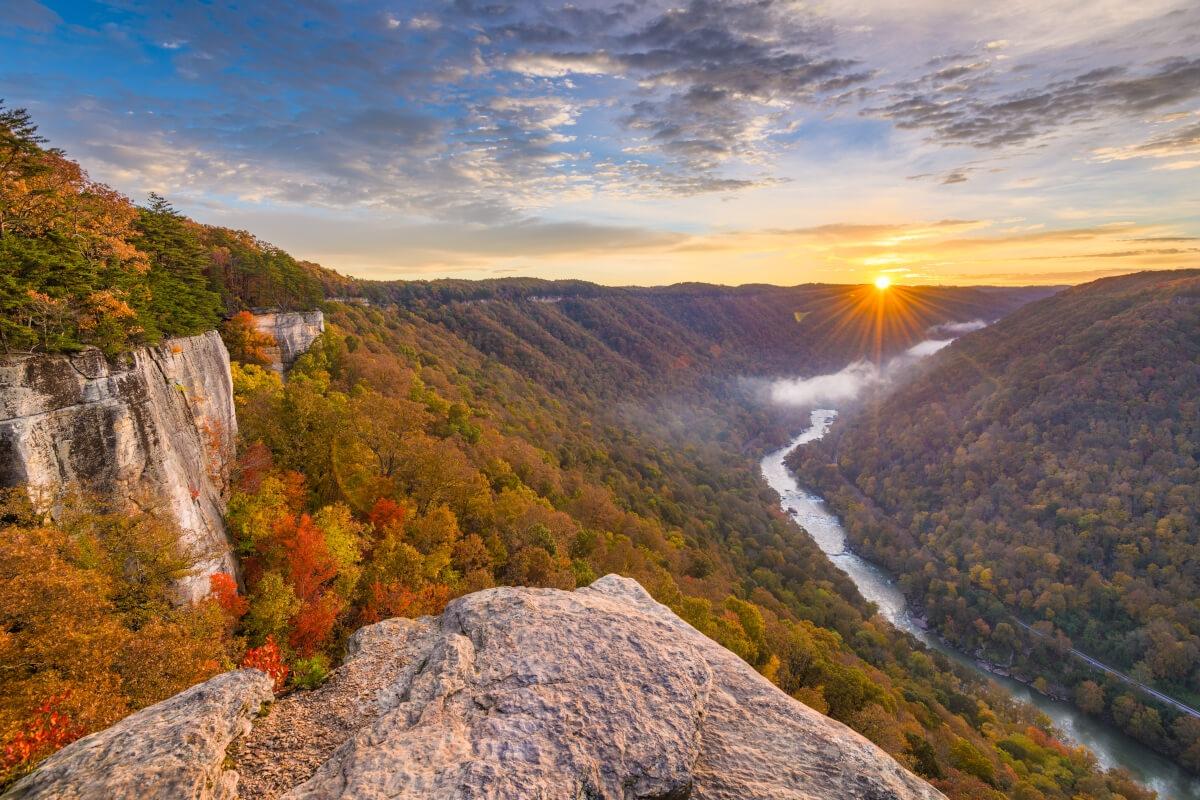
- Average Risk Score (FEMA): 23
- Risk Score (NOAA): 9.59
- U.S. Region: Southeast
- Most common weather event: Floods and severe storms
- Average rent: $911/month
Because West Virginia receives a lot of rain and snow, many of the disasters it faces are related to those events. There have been 21 disasters declared in the last 10 years, with a frequency of 1.27 disasters/year. Nine events have been billion-dollar weather and climate disasters. From 2015 to 2025, there was one drought, one flood, nine severe storms, two tropical cyclones, and one winter storm.
Floods and landslides are the most common because of frequent severe storms and runoff from all the snow accumulated over the winter. Due to jet streams, storms with plenty of wind and rain are frequent during the spring and summer. Sheltering hills and mountains keep rainfall low in the east, at about 30–35 inches, while mountainous areas get a lot more, averaging 65 inches.
In addition to getting flood insurance on top of renters’ insurance, there are some budget-friendly flood protection methods. Place any valuables or items you don’t want to risk somewhere high, making it harder for flood water to reach them. Properly sealing doors and windows can help keep the majority of the water out.
This rain turns to snow in winter; in a low river valley, Charleston gets around 28 inches, while Terra Alta, high in the Appalachians, can receive over 130 inches, with snowfall lasting for weeks.
However, though severe weather events happen, they are less frequent. West Virginia is also one of the least tornado-prone states east of the Rockies.
Renter tip: Look for an apartment with a fireplace that you can use as an alternative heat source, just in case. During winter storms, electricity can go out, leaving you susceptible to the extreme cold. Or ask your landlord if they will provide something similar, like a wood-burning stove, or buy one yourself.
Wyoming
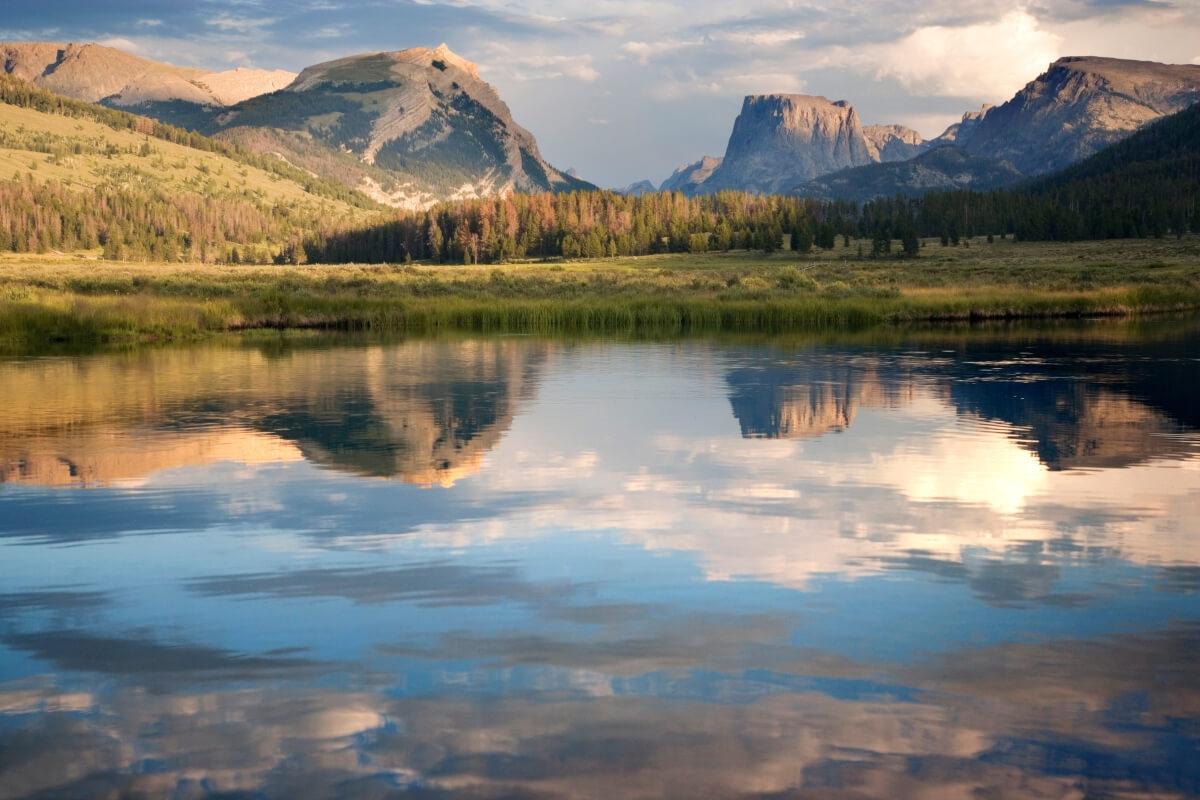
- Average Risk Score (FEMA): 29
- Risk Score (NOAA): 7.44
- U.S. Region: West
- Most common weather event: Fires
- Average rent: $1,120/month
Wyoming's low population density and disaster strategies make it a safe place to live. Only 18 disasters have been declared, and 17 were billion-dollar events, in the past 10 years. The 17 disasters consisted of four droughts, seven severe storms, and six wildfires. Wyoming usually has 1.55 major disasters per year.
Because of storms and runoff during the spring and summer, flooding most commonly occurs during those seasons. In the Laramie Basin, Laramie only gets 11 inches of rain, while mountains can get 40 inches. Most thunderstorms and rain occur in the southeast, with Cheyenne getting around 52 days of thunderstorms and the occasional minor tornado activity.
Before a storm hits, either bring outdoor items inside or tie them down to keep them from flying. If picked up by high winds, they can hurt you or someone else and cause damage.
It can get cold during the winter, with temperatures averaging 27 to 39°F with lows of 0 to 10°F. Higher places get colder and receive more snow, with most mountains receiving over 200 inches of snow. Low elevations get much less, with an average of 45–70 inches of snow.
Given how cold and snowy it can get, winter storms can bring the risk of prolonged exposure to extremely low temperatures, blizzards, and whiteout conditions. To keep the heat in the places you frequent, close the vents in unused rooms.
Renter tip: Test your smoke detectors at least once a month to make sure they are in working condition. Wyoming experiences some natural disasters, mainly fires, due to the state's dryness. Smoke detectors will alert you to fire, whether from a wildfire or another cause.
Utah
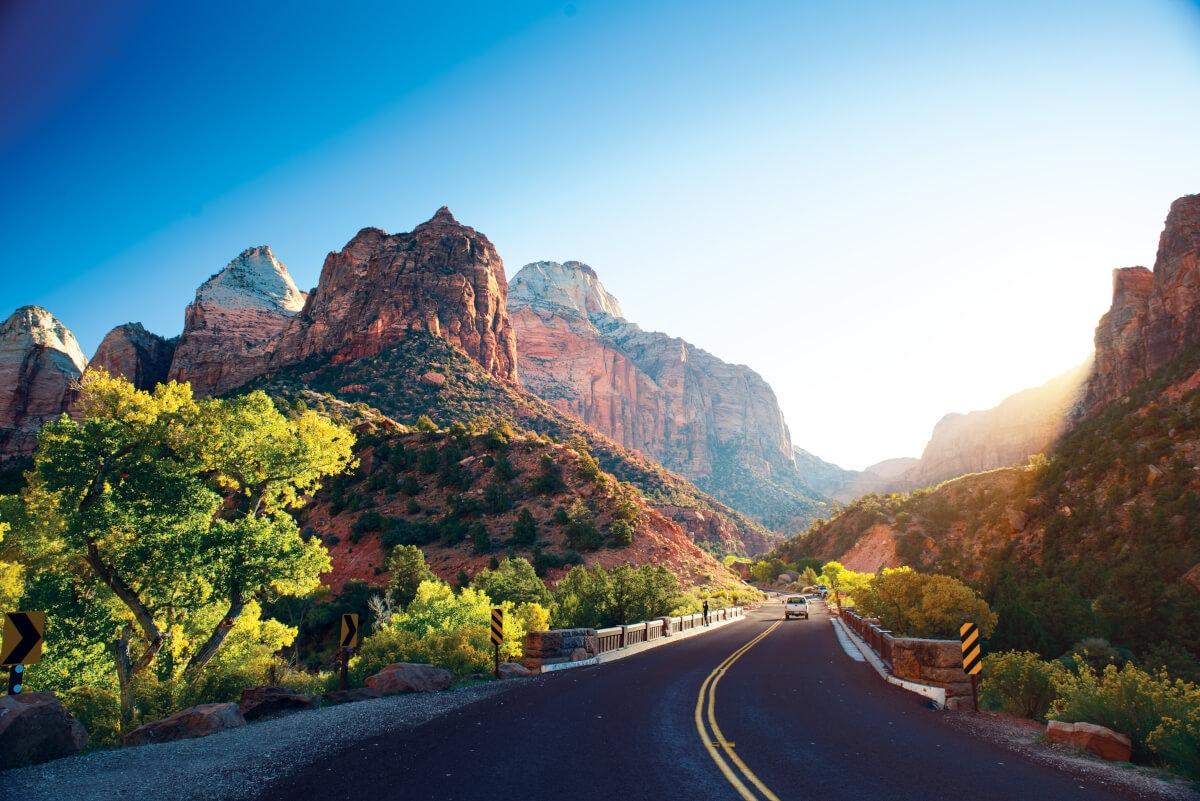
- Average Risk Score (FEMA): 43
- Risk Score (NOAA): 7.61
- U.S. Region: West
- Most common weather event: Fires
- Average rent: $1,383/month
Utah’s inland location and climate make it relatively safe from natural disasters — just 21 disasters have been declared in the past 10 years (nine of which were billion-dollar disasters). Five droughts, one severe storm, and three wildfires made up the nine billion-dollar disasters. You won’t have to face many, as .82 disasters occur annually.
Utah is one of the more seismically active states in the U.S., with minor and major events. While earthquakes cause damage, they are less destructive than other climate events. Securing heavy objects and furniture will keep them from falling and hurting you or your apartment.
Fall and spring receive the most rain, though the average amount varies significantly across the state. Southern Utah receives only 8–10 inches, while Salt Lake City, in the north, receives 15–17 inches. Melting snow and runoff from the mountains during the spring can cause flooding.
One of the driest states in the country, Utah has low humidity and a semiarid climate with deserts to the south. Summer bears the brunt of the heat, with southern areas getting as hot as 100°F in the summer, but more typically, the temperature is around 85–95°F in most areas. This extreme heat and dryness make wildfires a threat.
It can get surprisingly cold in the north and mountains, with temperatures hovering around freezing or below. There are long periods of below 0°F and snowfall in the mountains, and those areas can get 300 to 500 inches a year. Lower elevations don’t get as much, with the average being 60 inches. Warm areas, such as Saint George, receive very little snow.
Renter tip: If there is a fire nearby and you don't have to evacuate, stay indoors with windows and doors closed and run a portable air cleaner/filter. Keep your air conditioning running but set it to recirculation mode so you aren’t bringing in air from the outside.
Idaho
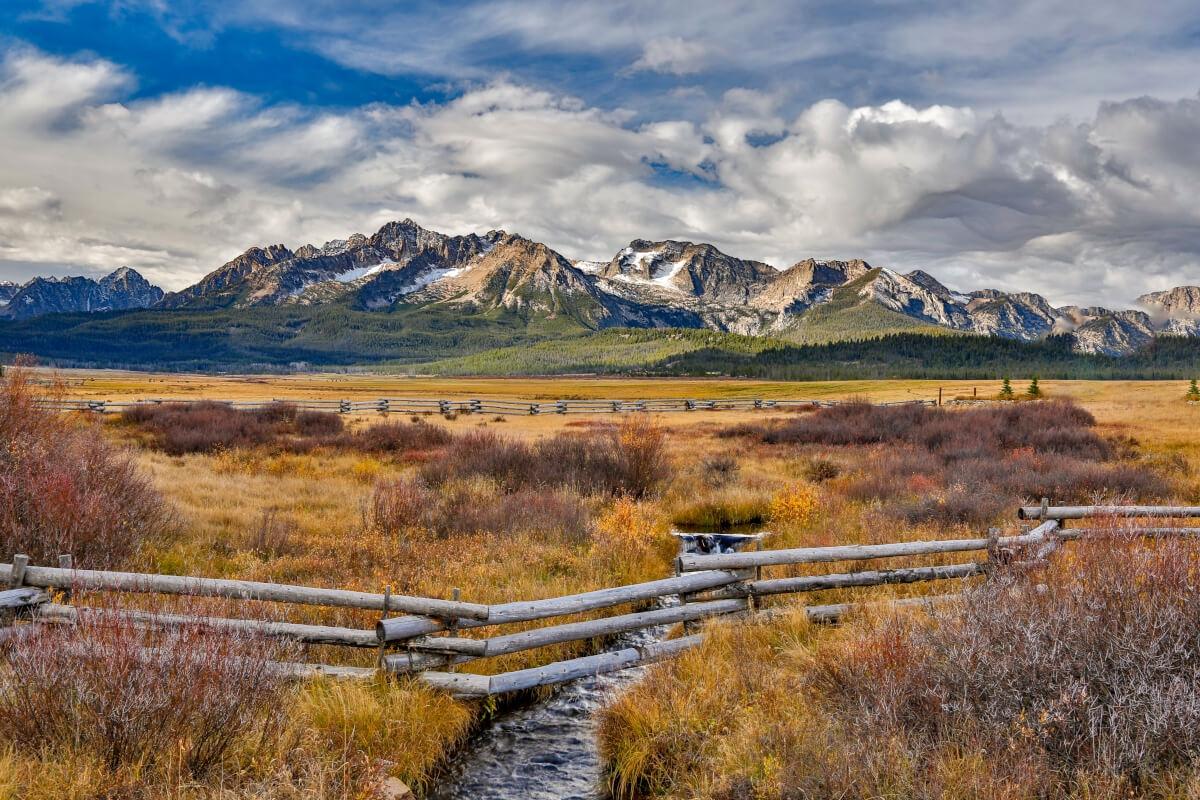
- Average Risk Score (FEMA): 34
- Risk Score (NOAA): 10.30
- U.S. Region: West
- Most common weather event: Fires
- Average rent: $1,353/month
Wildfires and droughts are the most common events in Idaho, and they can get quite dry during the summer months. Idaho also has areas that experience earthquakes. The average in Idaho is one big disaster a year; 22 disasters have been declared over the last 10 years. Half of those have been billion-dollar weather and climate disasters, four droughts, and seven wildfires.
The Snake River Plain can get hot. Temperatures typically average 90°F but get even hotter during heat waves. When faced with a heat wave, close curtains during the day to keep the air conditioning in and the heat out. Also, try to avoid using heat-producing appliances like the oven.
Snow varies by area; in Snake River Plain cities like Boise, the 18 inches of snow melt off quickly, while Hailey and high towns are buried beneath 50–150 inches.
The same trend applies to rain, with the higher areas getting about 40 inches while the low south gets under 10 inches. Runoff from mountains and severe storms can cause flooding and landslides.
Renter tip: Putting essential documents and items inside a safe will keep them intact.
New Hampshire
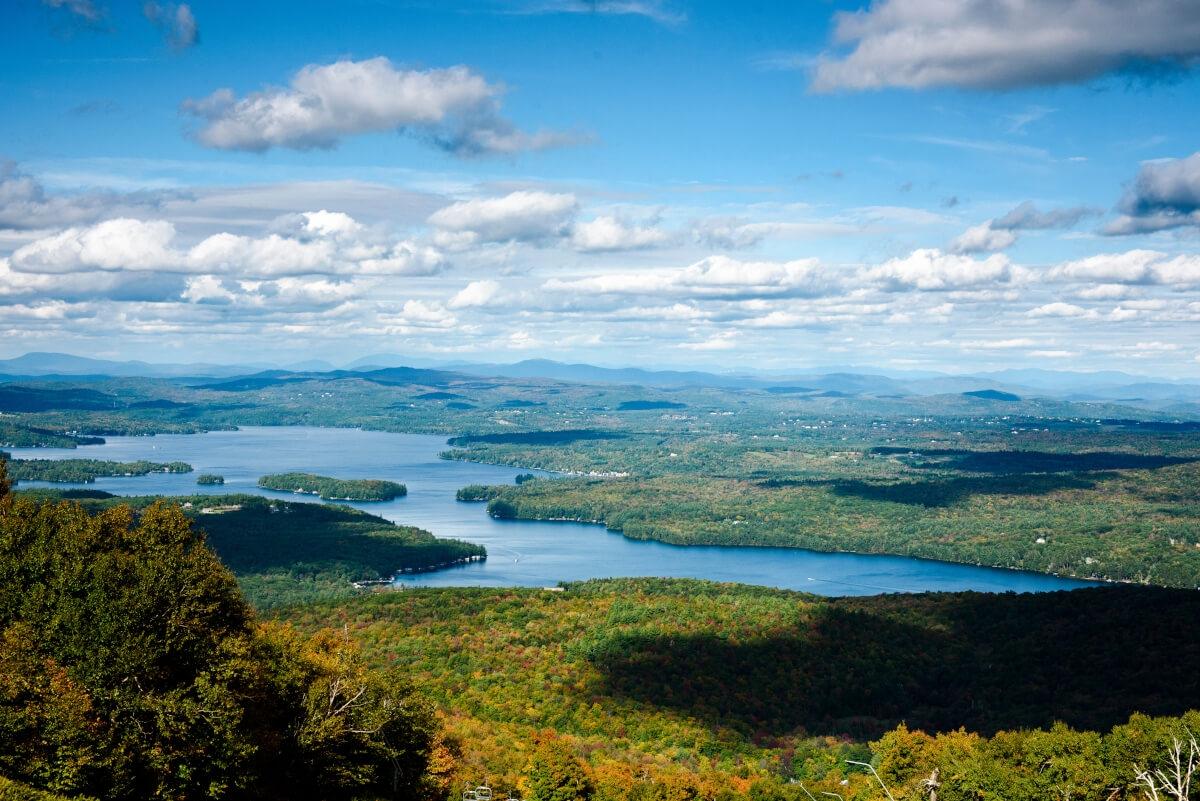
- Average Risk Score (FEMA): 62
- Risk Score (NOAA): 9.23
- U.S. Region: Northeast
- Most common weather event: Severe storms
- Average rent: $1,783/month
New Hampshire has had a few disasters declared, with only 18 occurring over the last 10 years, meaning that .64 disasters happen each year. Only seven (one drought, two floods, and four winter storms) have been bad enough to be classified as billion-dollar weather and climate disasters.
Most of the time, the worst storms, like hurricanes and tropical storms, pass by or are weakened before reaching New Hampshire. There is no one rainy season; rainfall is spread out over the entire year, and the state gets roughly 45 inches of rain because of frequent storms. Flooding is a risk in New Hampshire because of runoff and severe storms.
Cities in New Hampshire can be hit hard by winter, as the season is long and cold. Temperatures only get up to 34°F in coastal cities, like Portsmouth, while further inland, Berlin can get down to 5 to 25°F. Heavy snowfall is interspersed with lighter bouts; the state gets about 60–100 inches yearly. Bad winter storms and cold waves can whip up blizzards and freeze everything.
Renter tip: In areas where temperatures drop below freezing, it is wise to let your faucets drip to prevent your pipes from freezing. You can also place items on or against the wall (posters, pictures, tapestries, bookshelves, etc.) and cover your floor in rugs to insulate your apartment.
Maine
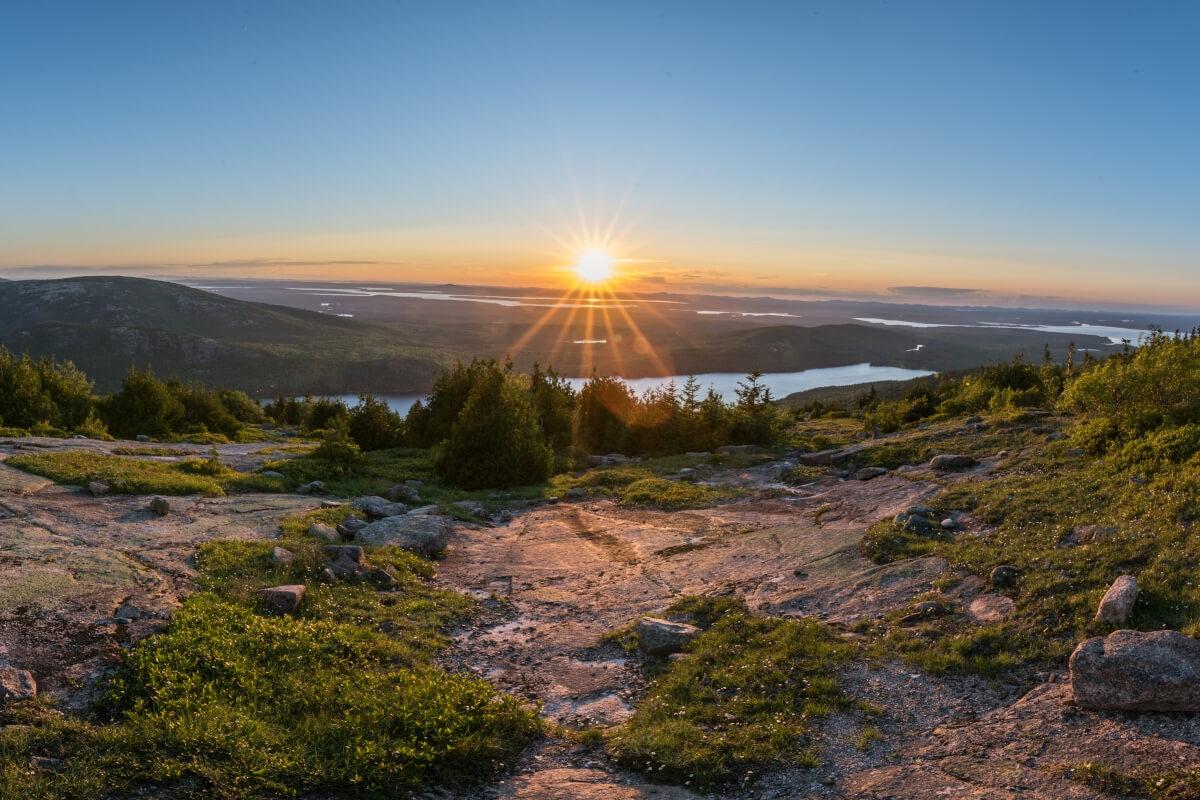
- Average Risk Score (FEMA): 59
- Risk Score (NOAA): 10.96
- U.S. Region: Northeast
- Most common weather event: Severe storms
- Average rent: $1,658/month
If you rent in Maine, you won’t be dealing with bad disasters every year, as their frequency is .64 a year. Seven billion-dollar weather and climate disasters have struck Maine in the past 10 years. There were four winter storms, one drought, one flood, and one severe storm. In total, 15 disasters have been declared. With the coast and mountains, the weather can change a lot, depending on where you live in Maine.
Maine is similar to other states when it comes to rain. The coast gets the brunt of the rain, averaging 57 inches. Inland gets a lot less, just about 36–45 inches. Occasional hurricanes and tropical storms go near Maine, but storms usually go back out to sea or are severely weakened by the cold coastal waters.
However, these storms are still a threat as they can cause flooding. Runoff, severe storms, and rising sea levels also contribute to flooding. In coastal towns, snow can pile up to 50–80 inches, while inland and northern regions get buried even more. Meanwhile, to the north of Maine, Caribou gets over 100 inches. Because of heavy snowfall and ice, winter storms are right behind flooding, which is one of the more pressing weather events.
Renter tip: Since you’ll use heat more during the winter, carbon monoxide poisoning becomes more of a risk. If your apartment has gas heating, you must ensure your carbon monoxide alarms are working, or get one. Or find an apartment with electric heating to eliminate this danger.
The Most Common Natural Disasters in the U.S.
FEMA has compiled a list of all the federally declared disasters in the U.S. Since 2015, there have been a total of 1,415 disasters declared. The most common natural disasters are fires, severe storms, floods, hurricanes, tropical storms, and tornadoes.
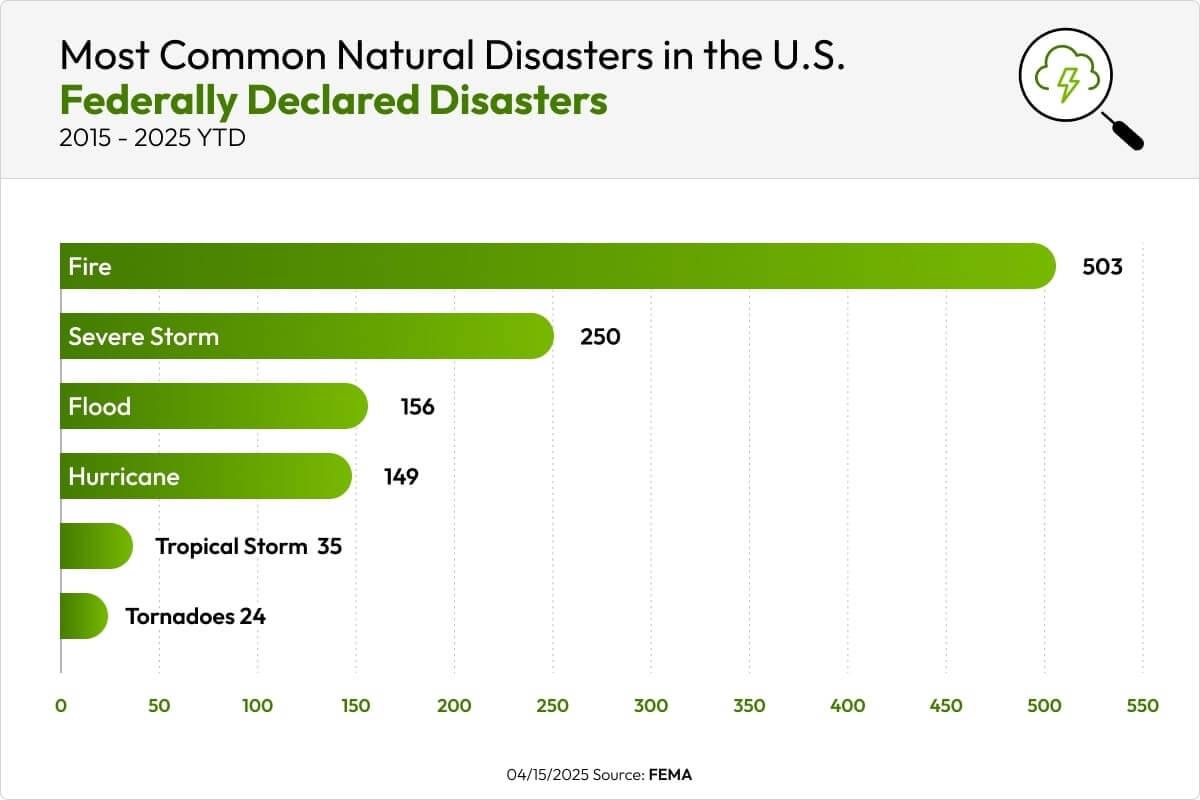
Compare the Safest States for Natural Disasters
The table below compiles the FEMA Risk Score, NOAA Risk and Vulnerability, and the average rent to compare each of the safest states.
|
State |
FEMA Risk Score |
NOAA Risk and Vulnerability |
Average Rent |
|
Alabama |
59 |
14.42 |
$1,042/month |
|
Alaska |
23 |
4.03 |
$1,283/month |
|
Arizona |
77 |
28.99 |
$1,345/month |
|
Arkansas |
58 |
16.59 |
$936/month |
|
California |
91 |
26.21 |
$2,183/month |
|
Colorado |
35 |
9.82 |
$1,589/month |
|
Connecticut |
83 |
10.74 |
$1,849/month |
|
Delaware |
89 |
14.43 |
$1,490/month |
|
Florida |
86 |
24.39 |
$1,694/month |
|
Georgia |
46 |
11.21 |
$1,421/month |
|
Hawaii |
71 |
11.37 |
$1,806/month |
|
Idaho |
34 |
10.3 |
$1,353/month |
|
Illinois |
52 |
12.56 |
$1,638/month |
|
Indiana |
48 |
11.43 |
$1,098/month |
|
Iowa |
48 |
14.58 |
$959/month |
|
Kansas |
39 |
13.05 |
$1,063/month |
|
Kentucky |
42 |
11.14 |
$1,052/month |
|
Louisiana |
69 |
16.65 |
$1,051/month |
|
Maine |
59 |
10.96 |
$1,658/month |
|
Maryland |
76 |
10.96 |
$1,675/month |
|
Massachusetts |
80 |
11.99 |
$2,518/month |
|
Michigan |
36 |
10.44 |
$1,126/month |
|
Minnesota |
41 |
11.61 |
$1,317/month |
|
Mississippi |
58 |
15.12 |
$976/month |
|
Missouri |
52 |
14.41 |
$1,107/month |
|
Montana |
21 |
9.05 |
$1,364/month |
|
Nebraska |
35 |
12.97 |
$1,075/month |
|
Nevada |
68 |
18.02 |
$1,347/month |
|
New Hampshire |
62 |
9.23 |
$1,783/month |
|
New Jersey |
90 |
16.25 |
$2,051/month |
|
New Mexico |
50 |
18.58 |
$1,172/month |
|
New York |
55 |
14.2 |
$2,930/month |
|
North Carolina |
67 |
17.61 |
$1,354/month |
|
North Dakota |
34 |
8.72 |
$937/month |
|
Ohio |
46 |
11.17 |
$1,059/month |
|
Oklahoma |
56 |
16.51 |
$895/month |
|
Oregon |
70 |
11.49 |
$1,463/month |
|
Pennsylvania |
50 |
11.36 |
$1,504/month |
|
Rhode Island |
68 |
9.37 |
$1,784/month |
|
South Carolina |
73 |
15.35 |
$1,388/month |
|
South Dakota |
36 |
11.17 |
$979/month |
|
Tennessee |
49 |
12.45 |
$1,355/month |
|
Texas |
54 |
17.29 |
$1,257/month |
|
Utah |
43 |
7.61 |
$1,383/month |
|
Vermont |
28 |
7.52 |
$1,814/month |
|
Virginia |
36 |
8.46 |
$1,792/month |
|
Washington |
69 |
8.39 |
$1,821/month |
|
West Virginia |
23 |
9.59 |
$911/month |
|
Wisconsin |
44 |
9.95 |
$1,224/month |
|
Wyoming |
29 |
7.44 |
$1,120/month |
Find Apartments in the Safest States on Apartments.com
Just as living in a safe state reduces worry about natural disasters, using Apartments.com eliminates any stress surrounding apartment hunting. A wide range of filters helps you see which apartments align with your needs; there is no need to sift through thousands of rentals to find one that matches your budget or has the washer and dryer you want.
You can learn all about the city you’re going to rent in with in-depth local guides that cover rent trends, cost of living, transportation, schools, points of interest, and more. With Apartments.com, you can search from afar by viewing floor plans and virtual tours to make sure you find a place you’ll love.
Methodology
This report’s rent data comes from CoStar Group’s Market Trend reports, a trusted source in commercial real estate information, analytics, and news for over 37 years.
Risk and vulnerability scores and frequency/year are taken from the NOAA billion-dollar weather and climate disasters. The total number of federal declarations and the most common weather events are from FEMA’s Disaster Declarations for States and Counties.
Frequencies and total numbers are from the past 10 years. The average risk score for each state was found using FEMA’s National Risk Index.
FAQs
What are some of the least safe states for natural disasters?
Some of the least safe states for natural disasters are:
| State | NOAA Risk Score |
| Texas | 17.29 |
| California | 26.21 |
| Florida | 24.39 |
| Louisiana | 16.65 |
| North Carolina | 17.61 |
What risks should you be aware of because of natural disasters?
If you face natural disasters, you need to know how they could affect your apartment. Disasters and weather events can cause structural, mold, and water damage. After a significant weather event, look out for signs of issues and alert your landlord of any emergency maintenance needs.
How can I prepare for weather events while living in an apartment?
Depending on the weather event, you might need to take different steps. For example, when confronted with a hurricane, you should have an evacuation plan, stock up on a week’s worth of food and water, have emergency kits, protect important documents, and seek shelter.
Renter’s insurance can also help protect you and your belongings. If a natural disaster strikes, insurance can help cover hotel costs while your apartment is uninhabitable.
What state has the least number of natural disasters?
According to the NOAA, Hawaii has had just one natural disaster in the past 10 years. However, this was a severe event that caused a lot of damage.


